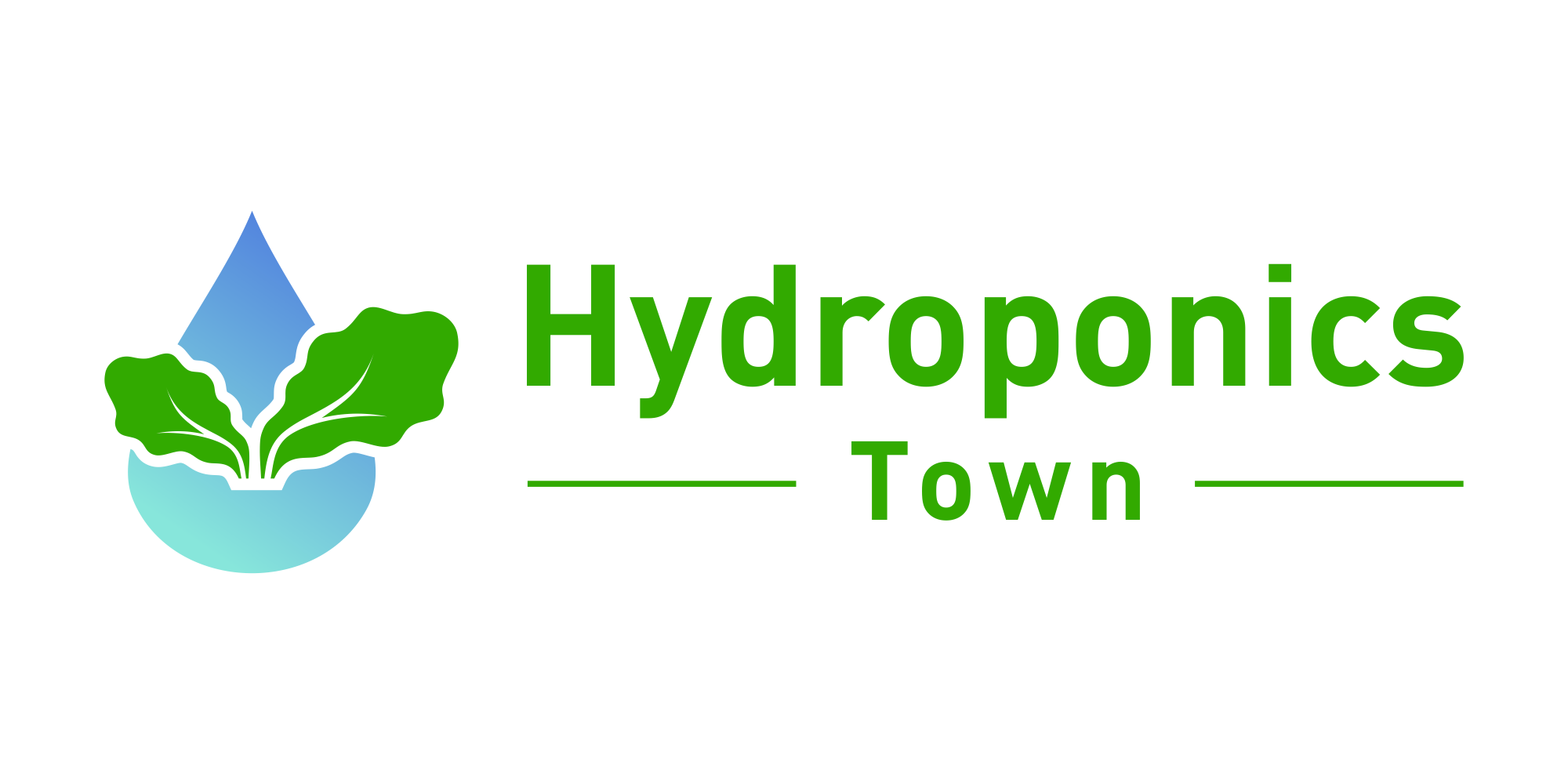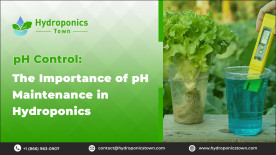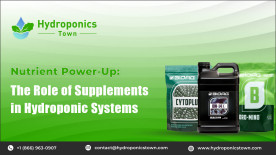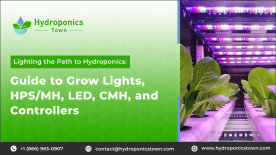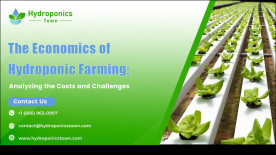Hydroponic farming is a soilless method of growing plants in nutrient-rich water solutions that frequently use inert mediums like perlite, vermiculite, or coconut coir to support the plant roots. This revolutionary approach to agriculture has several economic benefits and has the potential to transform the farming business. One of the key advantages of hydroponic systems is preserving water. Hydroponics uses substantially less water than typical soil-based farming, making it extremely water-efficient.
How does hydroponics work?
Hydroponics operates through a carefully designed system that provides plants with essential nutrients, water, and oxygen in the absence of soil. Hydroponic systems supply plants with a precisely balanced nutrient solution containing essential elements required for healthy growth, such as nitrogen, phosphorus, potassium, and micronutrients. The nutrient solution is circulated or dripped directly onto the roots of the plants, ensuring they receive an optimal balance of nutrients for their development. Instead of soil, hydroponic plants are supported by inert growing mediums like perlite, vermiculite, coco coir, or rock wool. These mediums anchor the plants in place while allowing air circulation and water drainage around the roots. The growing medium provides physical support to the plants and aids in the absorption of water and nutrients from the nutrient solution.
Roots in a hydroponic system require oxygen to facilitate respiration and nutrient uptake. Hydroponic systems often utilize air pumps, air stones, or aeroponics (misting roots with a nutrient solution) to ensure roots receive adequate oxygen. In hydroponics, water is circulated within the system to deliver nutrients and maintain proper hydration for the plants. Different hydroponic techniques, such as the Nutrient Film Technique (NFT), Deep Water Culture (DWC), or Drip Irrigation, enable water circulation around the roots, promoting nutrient absorption and growth.
The initial investment: Analyzing the costs of setting up a hydroponic farm
Setting up a hydroponic farm involves several initial investments in infrastructure, equipment, and essential systems to ensure successful operations. Here is an analysis of the costs associated with establishing a hydroponic farm:
Hydroponic system cost:
The cost of building the hydroponic system varies according to the size and complexity of the farm. This includes purchasing grow trays, reservoir tanks, pumps, tubing, and irrigation systems. Costs associated with nutrient solution tanks, pumps, and control systems for precise nutrient delivery to plants. Expenses related to installing grow lights to provide adequate artificial lighting in indoor setups or supplement natural light in greenhouses.
Infrastructure investment:
Acquiring or constructing a greenhouse or indoor facility to house the hydroponic system. Costs can vary based on size, materials used, and location. Installation of heating, ventilation, and air conditioning (HVAC) systems to regulate temperature, humidity, and airflow within the growing environment. Setting up a reliable water supply system, including plumbing, filtration, and possibly water recycling technologies, to sustain the hydroponic operations.
Equipment expenses:
Procuring inert growing mediums such as perlite, vermiculite, coco coir, or rock wool to support plant roots. Acquiring trays or containers for holding the growing medium and supporting plants, ensuring proper drainage and hydration.
Additional considerations:
Regulatory Compliance: Costs associated with obtaining permits, licenses, and adhering to agricultural regulations governing hydroponic gardening.
Insurance: Budgeting for insurance coverage to protect investments in case of damage, crop loss, or liability issues.
The operational costs: Evaluating the day-to-day expenses in hydroponic farming
Operational costs in hydroponic farming encompass the ongoing expenses incurred to maintain, operate, and manage the hydroponic system and agricultural activities. Here's an evaluation of the day-to-day operational costs involved in hydroponic gardening systems:
Nutrient solutions and supplements:
Regular procurement of hydroponic seedlings, essential nutrients, and micronutrients for the hydroponic system is necessary to maintain optimal nutrient levels for plant growth. Purchase of pH adjustersolutions to regulate and balance the pH levels of the nutrient solution.
Energy costs:
Electricity: Operational expenses associated with powering grow lights, climate control systems, water pumps, and other electrical equipment.
Energy-efficiency investments: Potential investments in energy-efficient technologies, renewable energy sources, or automation to optimize energy consumption and reduce long-term operational costs.
Labor:
Wages for skilled personnel responsible for monitoring the hydroponic system, managing nutrient delivery, maintaining plant health, and performing daily operational tasks.
Water management:
Costs linked to sourcing and treating water for the hydroponic system, including filtration, irrigation, and water quality management,
Potential expenses for implementing water recycling systems to minimize water usage and maximize sustainability.
Pest and disease management:
Biological controls: Investment in biological pest control measures, such as beneficial insects or organisms, to mitigate pest issues without relying on chemical Insecticides and pesticides.
Disease prevention: costs associated with disease prevention methods and treatments for plant pathogens, as well as routine hygiene and sanitary practices.
Maintenance and upkeep:
System maintenance: Expenditure on regular maintenance of the hydroponic system, including cleaning, calibration of equipment, and replacement of worn components.
Equipment replacement: Budgeting for potential repairs or replacements of system components, infrastructure, and growing supplies.
Refer: How to build a hydroponic garden a step by step guide
Economic benefits: Exploring the potential profitability and revenue streams in hydroponic farming
Exploring the economic benefits of hydroponics entails an examination of the various revenue streams and cost-effectiveness of the cultivation method.
Revenue streams:
Crop production: Revenue generated from the sale of high-value crops cultivated through hydroponic gardening, such as leafy greens, herbs, tomatoes, and strawberries.
Crop diversity: Potential income diversification through cultivating a wide variety of crops in a single hydroponic system, responding to market demands and expanding revenue streams.
High yields and predictable harvests:
Increased productivity: Commercial hydroponic systems often result in higher crop yields and faster growth rates compared to traditional agriculture, leading to increased revenue potential per square meter of growing space.
Staggered harvests: Ability to obtain consistent and predictable harvests throughout the year, allowing for more reliable revenue generation and market supply.
Resource efficiency and cost savings:
Water conservation: Efficient water usage and potential reduction in water consumption compared to traditional water farming methods, leading to cost savings and environmental sustainability.
Land utilization: Maximization of available space for crop production through vertical hydroponic farming and controlled environments, optimizing land use efficiency.
Market demand and premium pricing:
Local produce: Growing consumer preference for locally produced, fresh, and pesticide-free crops, allowing hydroponic farmers to capture premium pricing in local markets.
Health trends: Catering to health-conscious consumer trends by offering high-quality, nutrient-dense, and organic produce, contributing to higher price points and increased profitability.
Scalability and market potential:
Commercial ventures: Opportunity for scaling up hydroponic operations to meet commercial demand, supplying restaurants, supermarkets, and other wholesale channels.
Urban agriculture: Potential for establishing hydroponic farms in urban areas to address food security, reduce food miles, and tap into high-demand local markets.
Value-added products and diversification:
Product innovation: Ability to diversify revenue streams by developing value-added products such as hydroponically grown herbs, infused oils, or ready-to-eat salads.
Educational tours and workshops: Offering educational experiences through farm tours, workshops, and agritourism activities to generate additional revenue and community engagement.
Navigating challenges: Addressing common obstacles faced by hydroponic farmers
| Challenge | Solution |
| Initial capital investment | Explore financing options such as agricultural grants, government incentives, low-interest loans, or partnerships. Conduct cost-benefit analyses. |
| Technical expertise and training | Invest in comprehensive training programs, seek mentorships, collaborate with experts, and stay updated with industry best practices. |
| System management and maintenance | Implement routine maintenance schedules, automate monitoring processes, and invest in reliable equipment. |
| Water quality and supply | Implement water filtration and recycling systems, conduct regular water quality tests, and explore partnerships for water supply |
| Regulatory compliance and market access | Stay informed about regulations, invest in food safety certifications, and establish transparent supply chain practices. |
Know more: Hydroponics vs traditional farming
Sustainability & future perspectives: Discussing the long-term viability of hydroponic farming from an economic standpoint
Discussing the long-term economic viability of a hydroponic gardening system involves examining its sustainability and the future of farming. Hydroponic farming is inherently more water-efficient than traditional soil-based agriculture, offering sustainable water management practices and reducing water consumption.
Controlled environment Agriculture in hydroponics allows for climate resilience, reducing the impact of adverse weather conditions on crop production and ensuring consistent yields. The ability to produce crops regardless of seasonal changes enhances revenue streams throughout the year, contributing to economic stability and market competitiveness.
Growing consumer preference for fresh, locally grown produce supports the market demand for hydroponically cultivated crops, enabling farmers to capture premium prices. Continuous technological advancements in automation, sensor technology, and data analytics improve operational efficiency, reduce labor costs, and enhance production outcomes. Investment in research and development leads to innovation in crop varieties, nutrient solutions, and system designs, boosting productivity and market competitiveness. Collaborations with academic institutions, research centers, and industry stakeholders foster knowledge exchange, promote best practices, and drive innovation in hydroponic farming. The projected growth of the hydroponic industry indicates increasing market opportunities, investment potential, and scalability for sustainable economic growth.
By embracing the economic potential of hydroponic farming and proactively addressing cost barriers and challenges, farmers can unlock sustainable growth, profitability, and market competitiveness in the agricultural sector. Through efficient resource management, innovation adoption, market differentiation, and a commitment to sustainability, hydroponic farmers can navigate obstacles effectively and build a resilient business model that thrives in the evolving landscape of modern agriculture. With a strategic investment in technology and a focus on sustainability, hydroponic farming holds immense economic promise and the potential to transform the future of farming.
FAQs
What are the economic benefits of hydroponic farming?
The economic benefits of hydroponics include higher crop yields, reduced water usage, and the potential for year-round production. Additionally, hydroponic farming can lead to better space utilization and the ability to grow crops in locations with limited arable land.
How does hydroponic farming compare to traditional farming in terms of costs?
Hydroponic farming can require higher initial capital investment compared to traditional farming due to equipment and infrastructure costs. However, ongoing operational costs such as pesticides, herbicides, Enzymes, and water usage may be significantly lower in hydroponic systems.
What are the main challenges and expenses associated with setting up a hydroponic farm?
Challenges and expenses associated with setting up a hydroponic farm include initial infrastructure costs for setting up the growing environment, investment in specialized equipment such as pumps and nutrient delivery systems, and the need for technical expertise in hydroponic cultivation methods.
Can hydroponic farming be a profitable venture in the long run?
Hydroponic farming has the potential to be a profitable venture in the long run. With the ability to produce high-value crops, adapt to urban settings, and optimize resource efficiency, successful hydroponic operations can generate significant returns on investment over time.
Are there any government incentives or subsidies available for hydroponic farmers?
Government incentives and subsidies for hydroponic farmers may vary by region. Some governments offer grants, tax incentives, or subsidies for sustainable farming practices, including hydroponics.
